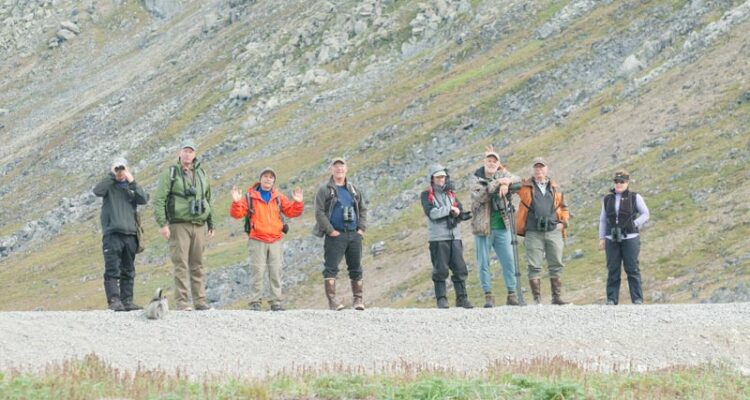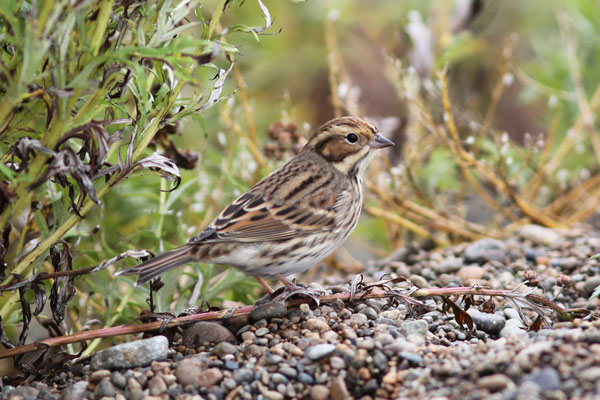It's been a great fall season for Wilderness Birding Adventures with exciting and productive trips to…
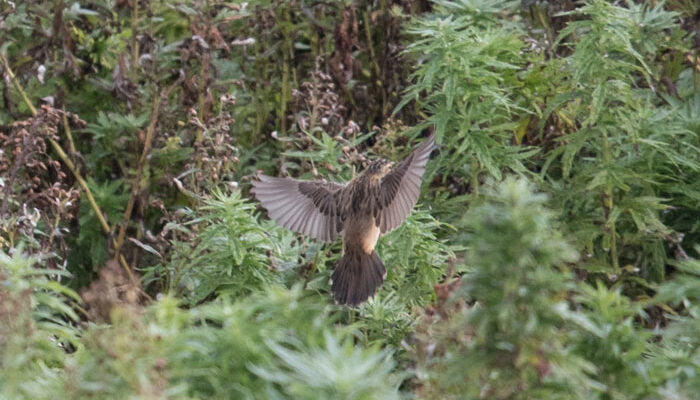
Our Gambell Tour Finds a New Species for North America!
Report and photos by tour leader Aaron Lang.
A trip to Gambell in the fall can be frustrating, rewarding, exhausting, exhilarating, discouraging, and at times, nearly magical. Every trip could be described using one or two of these words. But every once in a while there is a trip that is aptly described by all of these. Our 2019 fall trip to the northernmost island in the Bering Sea was one of those trips.
For most of the 11-day trip, there were a lot of uncommon to rare migrants around. This list included mostly birds from the Alaskan mainland like GOLDEN-CROWNED, WHITE-CROWNED, and “SOOTY” FOX SPARROWS. As well as rarer finds like CHIPPING and LINCOLN’S SPARROW. These sparrows and warblers like WILSON’S, ORANGE-CROWNED, YELLOW-RUMPED, and TOWNSEND’S filled the boneyards and filled out our trip list. However, these were mostly not the species that birders hope for at Gambell during fall migration.
The first island record of a WOOD-PEWEE (probably Western) a few days into the trip added some excitement, but Asian rarities were nearly completely lacking for much of the trip. An OLIVE-BACKED PIPIT that we saw only
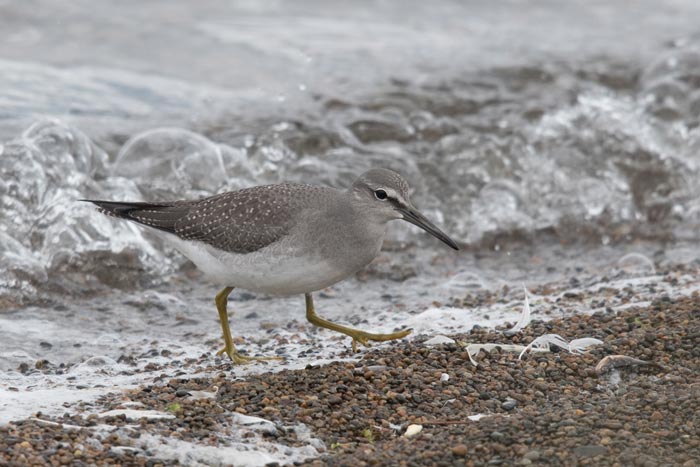
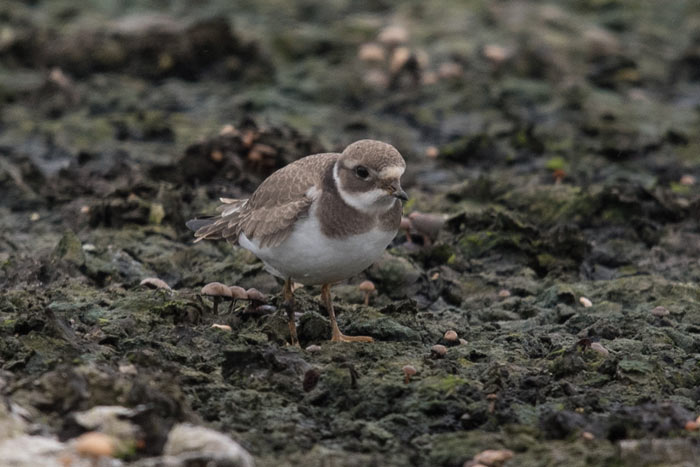
Gray-tailed Tattler is a regular fall migrant at Gambell and we find at least one on most of our fall tours. Common Ringed Plover are rare breeding birds on St. Lawrence Island and we get them on most of our spring tours. This year we found two on our fall tour. This is the first time we’ve had them in the fall and is a new late date for the island by about a week.
So on the morning of September 8th, with just over 24 hours left to go in the tour, we were looking at wrapping up a very fun trip, with a long list of birds found by an excellent crew of birders, but it was a trip that mostly lacked Asian rarities, which, of course, is what we all dream about at Gambell. And then, well, things changed. After several days of moderate east and northeast winds with rain, the winds on the last two days of the trip were light and variable with little precipitation. Our morning sweep of the Far Boneyard on September 8th produced two SIBERIAN ACCENTORS which showed very well and called loudly to each other as they perched
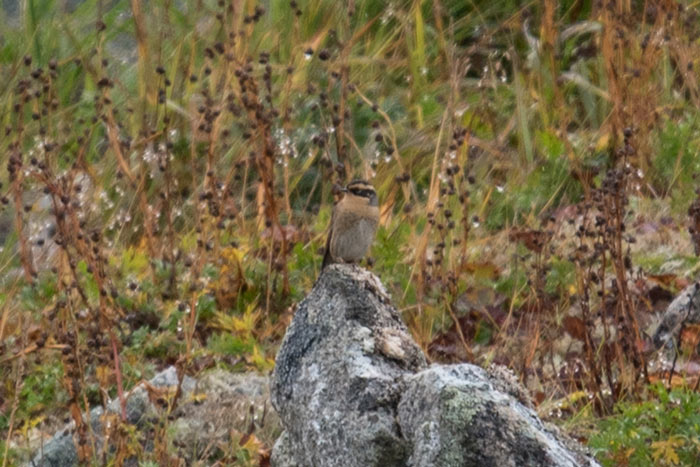

Siberian Accentor and Middendorff’s Grasshoper-Warbler on the last full day of the tour.
On the last morning of the trip, our final sweep through the Far Boneyard didn’t produce any new birds. Rather than go to lunch, we opted for a quick check of the Near Boneyard first, just in

Pallas’s Grasshopper Warbler, working it in the bright sun.
Could it really get any better? While we were working the Pallas’s Grasshopper-Warbler, a calling LITTLE BUNTING literally fell from the sky and landed in the boneyard in front of us! Little Bunting is nearly annual at Gambell in the fall, but this was the first of the season. Time was now running very short for our group. We had to rush back to the house to shovel in a quick lunch and pack up for the 5 PM flight back to Nome. We got back to the tarmac, which is surrounded by the near boneyard, about 40 minutes before the flight so we could spend the final minutes of the tour in the boneyard trying to get better looks at the Little Bunting and Pallas’s Grasshopper-Warbler. And then…the radio cracked and Paul Lehman’s voice clearly and excitedly called out… “WRYNECK in Old Town flying toward Clarence’s House!!” What?! I was standing next to Clarence’s house with two folks in our group! With a great degree of panic, I scanned the air for the bird and the birders that called it out. I turned to the south and saw the rest of our group with Paul and watched a strange woodpecker-like bird fly in and land in the grass in front of them. It was literally 10 minutes before the flight arrived! Before our group got on the plane all had achieved great views of the nearly mythical Eurasian Wryneck. Only the fourth ever for North America!
What a turnaround and what a trip! September 9th, 2019 is the new September 4th, 2014.
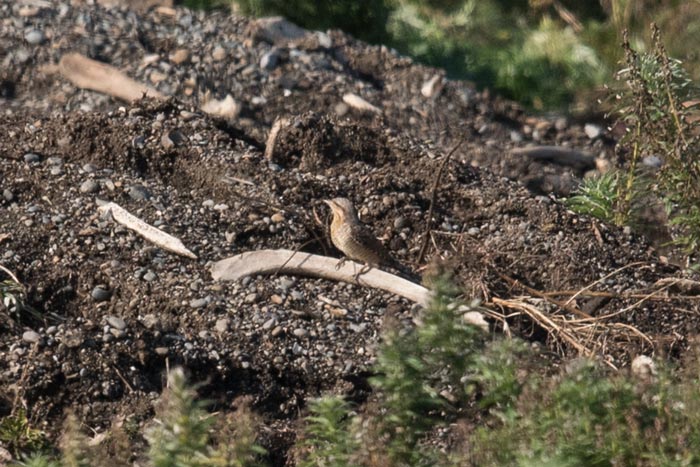
You know it’s been a good day of birding at Gambell when Eurasian Wryneck has been relegated to the second rarest bird of the day.

